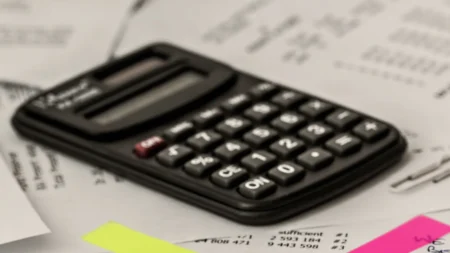A bank reconciliation statement is an accounting document that compares the cash balances on a company’s internal records to the amount recorded in its balances with the bank (or banks).
Record keeping and accountability are crucial to any company’s business goals and long-term sustainability. As a result, it is essential to keep accurate financial records at all times.
Bank Reconciliation Illustration
Take your local mini-mart, for example. Say Mall-XY.
Whenever Mall-XY makes sales at any of its outlets, the in-house accountants record it in their books i.e. Cash books, Ledgers, Journals, etc.
The information is drawn from confirmed purchase receipts, purchase orders, credit notes, debit notes, invoices, etc.
Often they also have to take out some money to meet up with certain expenses during the day-to-day business operations like internet fees, fueling, transportation, etc. All of that is also recorded.
Whatever is left of the sales proceeds is then deposited periodically in the company’s designated bank checking or savings accounts. Sometimes, customers may also pay directly to the bank via bank transfers and credit card payments.
On the other hand, the banks also keep records of every deposit and withdrawal made on each of the company’s bank accounts. These records are available to the management of Mall-XY on-demand in the form of a bank statement document.
The managers of Mall-XY have to ensure that every unit of sale and expense incurred has been duly recorded and that every penny is accounted for.
One way to ensure this is to compare the figures that have been recorded in the in-house books of accounts (Cashbook, Journals, Ledgers, drawn from purchase Receipts, and Invoices.) to the bank statement in each of the company’s bank accounts.
At every point, the balances on Mall-XY’s in-house books of account must be equal to the balances shown on its bank accounts.
If there are significant differences between both figures, then an investigation is launched to bring both balances to par. The process of investigation and compensation is what is known as Bank Reconciliation.
Reconciling the two accounts helps to identify whether accounting errors were made, transactions were omitted, or if fraud has occurred. Bank reconciliations are completed regularly to detect minor discrepancies or major malfeasances early.
What is Included in a Bank Reconciliation Statement?
In summary, a bank reconciliation statement examines a company’s banking and business activity to compare its bank account with its in-house financial records.
The bank reconciliation statement contains details of the deposits, withdrawals, and other activities affecting a bank account for a specific period.
It is an essential financial internal control tool that helps to thwart fraud and detect bookkeeping errors.
Reasons for Discrepancies between Bank Balances and Statement
Some companies conduct Bank reconciliation daily. Others, weekly, monthly, or quarterly, depending on company policy. However, monthly reconciliation is the most common.
So, for instance, when the Bank sends Mall-XY its monthly bank statement, it usually contains the company’s cash balance at the beginning of the month, a list of transactions during the period, and the ending cash balance.
More often than not, there are always differences between the ending cash balance figures with the bank and in-house financial record books.
Here are a few reasons for such discrepancies.
- Deposits in transit: These are cash and checks that have been received and recorded by the company accountants but have not yet been recorded on the bank statement as of the cut-off date.
- Outstanding checks: This is when the company has issued checks to its creditors, but the payments have not yet been processed. This occurs mostly because the client has not yet presented the check for payment. And as a result, an expense is recorded in the company’s books without a corresponding deduction from its bank balances.
- Bank service fees: Banks deduct charges for custodial and advisory services they provide to companies. Most of these charges are automated. And because the banks don’t usually come to the business premises to present invoices for such deductions, it is difficult for in-house accountants to record them. However, these amounts are usually relatively small.
- Interest income: When the company keeps money with the Bank for an extended period, especially in non-checking accounts. Banks will have to pay interest. They are also automated. And because banks don’t present interest payments in the form of checks or cash at the company’s business premises. It might be difficult for the accountants to capture them in their records. Thereby leading to a discrepancy.
- Dis-honoured Checks: When a customer pays for a product with a Check, the accountant records it as income earned. But upon presenting the check at the bank, they may reject it for certain reasons. i.e. Non sufficient Funds (NSF), Frozen accounts, Irregular signatures, and differences between the Amount written in figures and words.
- Fraud
- Accounting Entry Errors
Bank reconciliation Procedure
A bank reconciliation statement is usually prepared by an accountant or auditor on any other designated professional commissioned by the company.
To perform a between the two books of account, the accountant requires the current and the previous month’s bank statements, and in-house record books for the same period(s).
To trace a specific error or discrepancy, accountants must dig into such transactions’ roots. They have to sift through thick paper trails, including source documents like receipts, invoices, purchase orders, petty cash books, sales ledgers, etc.
To perform accurate bank reconciliation, every material transaction that occurred within the period in view must be examined critically.
Examining Bank Balances
After spotting the discrepancies and uncovering the reasons, the accountant then proceeds to adjust the bank statement’s ending balance to reflect any outstanding checks or withdrawals.
An example is a check mailed in March. 30. When preparing the March. 31 bank reconciliation statement, it is unlikely that checks mailed the previous day have been cashed.
So, the accountant deducts this amount from the bank balance. There may also be some recorded payments that the bank has not processed, which will require a positive adjustment.
Adjusting Balance per Books
The company’s in-house cash records balance may also require some adjusting. For instance, banks charge a monthly fee for having the account open. The bank usually deducts these fees automatically from the bank account.
Therefore, when preparing a bank reconciliation statement, the account must consider any fees taken from the account and reconcile them by preparing a journal entry.
After making all adjustments successfully, the book balances should equal the ending balance of the bank account.
Bank Reconciliation Software
Nowadays, many organizations use specialized accounting software in bank reconciliation to increase the efficiency and speed of adjustments required and to enable accurate updates in their record.
Examples of Bank reconciliation software are; Reconart, Bank Rec, Cashbook
Video Explanation of Bank Reconciliation Statement
Conclusion
For any company to achieve its business goals and ensure long-term survival, it must keep accurate records of its finances and ensure that every penny is accounted for.
A Bank Reconciliation Statement is a valuable tool to achieve this. It is standard practice to perform this exercise at regular intervals.












